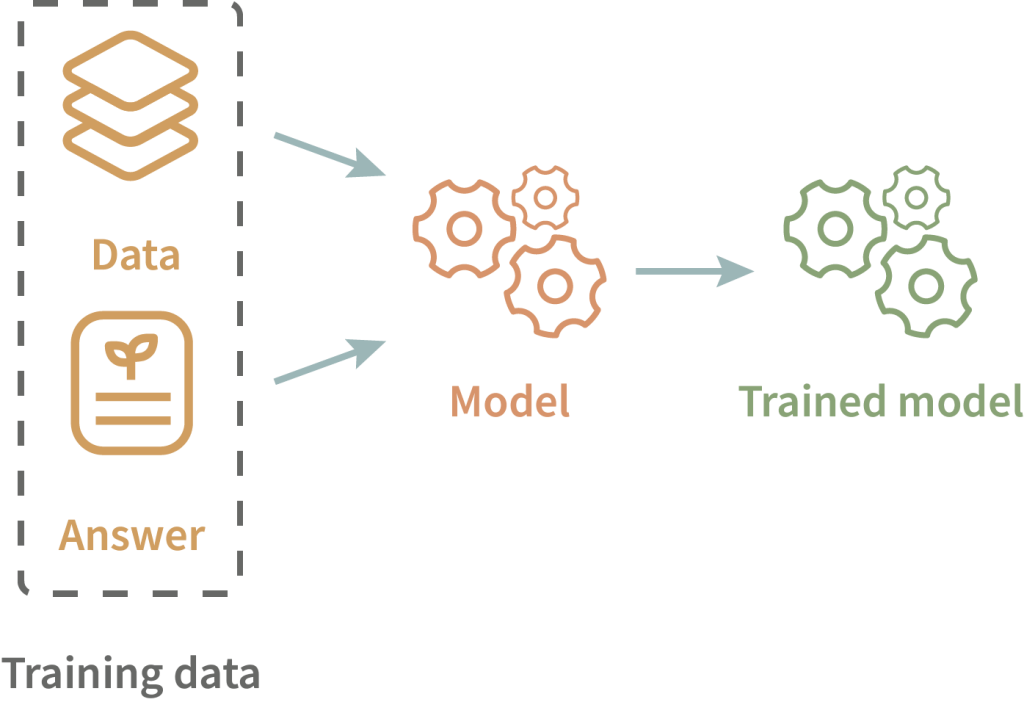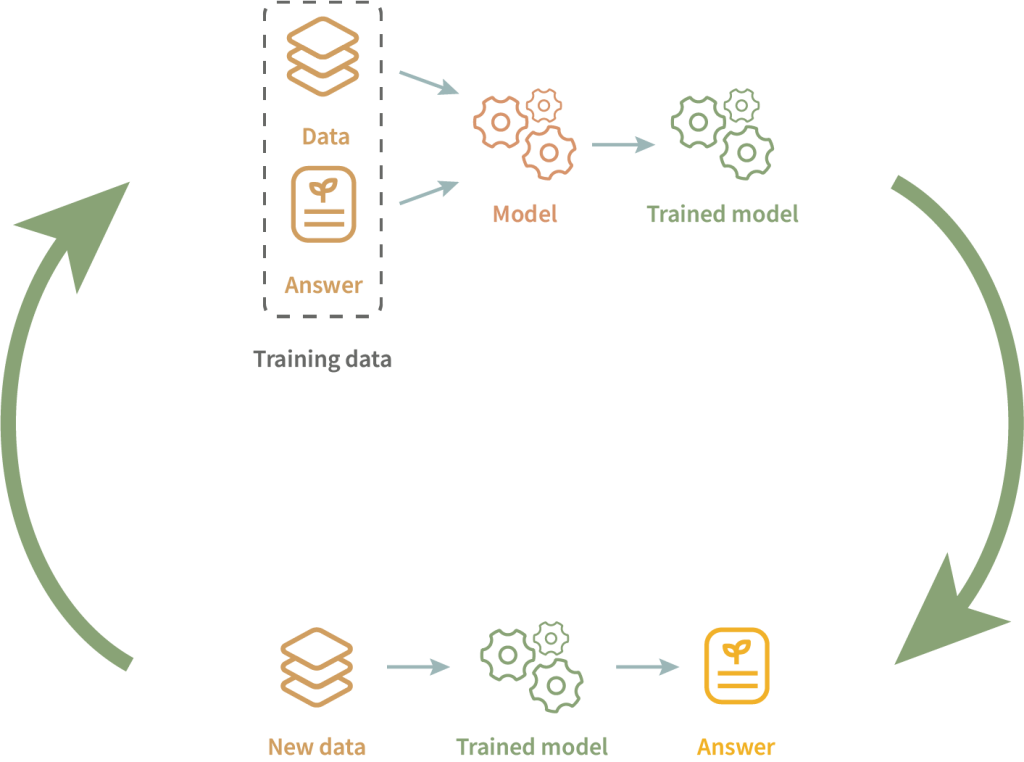Let's look more into what is different with AI
An AI powered solution is different from more traditional digital solutions in several ways, where one of the most important differences is that an AI solutions can be trained using data to become even better whereas a traditional solution is more static in the performance. In this Agtech Letter we walk through the main parts of how the AI technology is trained to become better. We keep it at an overview-level to not get stuck in details but instead grasp the overall process and workings.
What is different with AI compared to traditional solutions?
Much can be said on this topic on what’s the difference between a traditional software (“computer program”) from an AI solution, but a lot of the differences are boiling down to the fact that AI solutions can be trained repeatedly to become better and better when more data is accessible.
A traditional software solution
In a solution that is based on traditional software it is common that some kind of data is used as input to the computer program, followed by some computations to manipulate data in a desired way to finally return some kind of answer. One example is a traditional Farm Management Information System where the amount of nitrogen fertilizer applied to a certain field at different times during the crop season can be used as input to compute the total amount of nitrogen fertilization applied to that field by summing the individual applications.

Training and using AI models are done in different steps
One of the main differences between an AI solution and a traditional software system is that training data is used to train the AI to become better at understanding and solving its dedicated task. The AI model consist of algorithms and parameters that together are used to describe how the AI should work with new data given to it.
The parameters can be considered as knobs that can be tuned to get the model to fit the training data well. The process of turning these knobs to find good parameters is known as training the AI model which usually requires lots and lots of work done by humans and algorithms using powerful computers, often using the “cloud”.
To make the information easier to understand, we use an example of an AI system that estimate the weight of pigs to determine that they grow as expected by using a camera mounted above the boxes and a suitable AI model.
Training an AI model using training data
When the AI model is trained, data is used just like when running a traditional software solution. However, to “teach” the model how to behave and handle new data, also “answers” to the task that we want the AI model to solve are applied as input. The data together with the answers are together called training data.
By providing both the data and the answers on how to solve the task, the AI model is able to learn how to perform the task and compute the same answers using the same data. The training of an AI model is almost an art that often require skilled AI engineers that put together a high-quality and relevant training data set and tune the parameters to get a good fit between the AI model and the data.

In our example with the camera for estimating pig weights, the data consists of images of pigs and the answers are the weights for each pig in the images. Hence, the training data consists of images with a connected measured weight of the pigs. Creating this training data set is probably a tedious work done mostly manually by farmers and or researchers that take an image of a pig and then measure the weight of it. This process of combining data and answers are called annotating data and is a “hidden” work that not many AI companies talk about since it is not the “cool stuff” with AI, even though it is absolutely crucial to get it right to develop a useful AI solution. The next step is to select a suitable type of AI model, and since the AI model should work with images and image analysis a deep learning model is probably a good choice.
Using an AI solution for new data to solve a task
Once the AI model is trained, the AI solution can be used to solve tasks in real time. Then, of course, the correct answers to data are not know but is instead the task of the AI solution to find out. traditional software, meaning that new data is used as input to the trained AI model that is processing and manipulating the data to come up with an answer to the task. This could for example be

Returning once again to our example, the AI solution can be used in real time to estimate the weights of the pigs by using the AI model that was trained from the images of pigs and their weights. Since the model has been trained on these types of images, once there are new images available to the model it knows how to do the computations to estimate the weight of the pig that is seen in the image. This information can then be used by other systems to for example determine if the pig is growing as expected or if any action should be done to improve the growth rate.
Continuous improvement through human interaction and more data

Once the AI solution is up-and-running and is used in production, more data is generated from the operation of the system itself but also from interactions with humans where new information and corrections are provided. By re-training the AI model continuously using this new data and new answers, the performance of the AI model can become better and better over time.
This is one of the reasons why a high interaction between AI and humans is important, but also why AI developers want access to your production data.
Strategic Outlook
Active users and a regular interaction between AI and humans are some of the key aspects to develop high-performing AI solutions that can solve real-world tasks. Since this continuous improvement requires lots of operational data and data on interactions its reasonable to believe that the importance of data-sharing will increase over time. By sharing data with the company developing the AI solution, you will get access to an AI solution with higher performance that hopefully solves the task better and more profitable.
However, always keep in mind what data you are sharing, what the company is using the data for, if they are sharing it with other third-parties, how the integrity of your data is handled, and other similar topics of data sharing. We will get back to data-sharing in coming Agtech Letters to discuss more on this topic.
Agtechers' Actions
When you read about AI solutions, or evaluate them before investing, its a good habit to keep the training process in the back of your head to fully understand that the technology is solving the problem at hand and that the solution is suitable for your settings.
In the next Agtech Letter we start looking at AI assistants and how they can be used.

